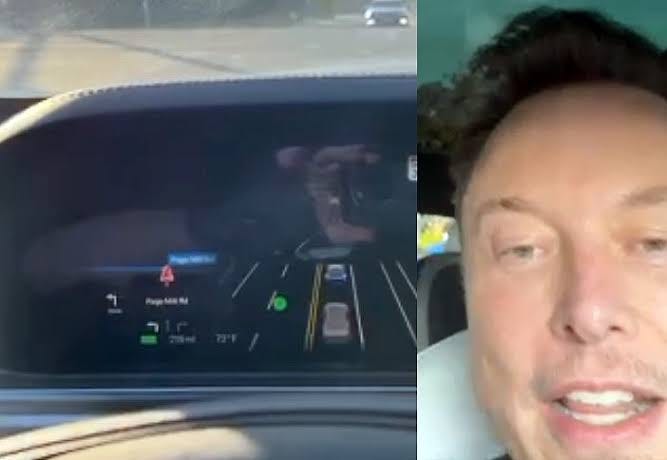The Unwavering Belief in Tesla's Camera-Only FSD AI
Written on
Chapter 1: The Dismissal of Tesla's FSD Approach
Tesla's camera-centric Full Self-Driving (FSD) AI has faced considerable skepticism from various quarters—be it analysts, media, the general public, or the automotive sector. The recurring narrative insists that "it must include LIDAR!" or "HD mapping is essential!" Yet, these assertions often lack any substantial evidence to support them.
Bizarre reports have even positioned Tesla at the bottom of the autonomous vehicle hierarchy, mainly due to their focus on short-term metrics. However, Tesla stands alone among autonomous driving companies, aggressively pursuing the ultimate goal: a scalable and cost-effective solution for universal autonomy. The reveal of FSD version 12 was nothing short of astonishing.

Chapter 2: Entering a New Era of AI
It seems that many have forgotten that the AI landscape of 2023 is far from mere hype. Current AI technologies are far exceeding initial forecasts. Consider ChatGPT and innovative image creation platforms like MidJourney; these were developments that few anticipated.
Moreover, advancements in image recognition technology are progressing even faster than generative AI. We are indeed entering a new era of artificial intelligence. The idea that camera-based AI cannot operate a vehicle is simply unfounded.
Neural FSD: A Bold Demonstration
Elon Musk recently took a bold step by publicly demonstrating the unreleased FSD version 12 for an impressive 45 minutes, with just one intervention. This iteration relies on minimal hard-coding. It hasn’t been explicitly taught to identify a person, lane, gutter, road sign, vehicle, or traffic light. Instead, it has learned from millions of hours of footage featuring proficient Tesla drivers and is now driving more smoothly and safely than ever before.
I anticipate its release in mid-2024, with regulatory approval likely by early 2025.
#### Understanding Neural Networks
The primary reason non-technical individuals struggle to grasp AI-driven driving lies in their limited understanding of contemporary neural networks. With adequate training data and a suitably designed neural network architecture, these systems can achieve a profound understanding of new visual data.
"Deep" understanding refers to grasping the underlying causes behind incoming data, rendering the system indifferent to factors like weather or time of day unless they are crucial for context.
Neural FSD prioritizes the essential elements pertinent to safe driving. While the color of vehicles may not matter, the color of traffic lights certainly does. This context can be learned without the need for manual labeling or hard-coded rules. Rather than relying on extensive lists of regulations, it incorporates a few exceptions while continuously monitoring to ensure genuine comprehension.
However, this requires vast amounts of data to avoid the pitfalls of coincidental learning or rote memorization. The greater the data volume, the more comprehensive and nuanced the solution becomes. Tesla uniquely possesses millions of miles of data, recorded with strategically positioned cameras.
Even when faced with entirely new scenarios—such as an unexpected object appearing in the roadway—neural FSD is unlikely to react recklessly. Its training data, although not a perfect match, helps steer it away from making dangerous decisions. If an accident were to occur, it would likely be unavoidable.
Regulatory bodies like the NHTSA understand that data-driven safety systems have the potential to save lives.
The Transformative Potential of FSD
The potential benefits of this technology are staggering:
- Up to one million lives saved annually
- Efficient, cost-effective point-to-point commuting and public transport
- Significant reductions in freight costs, boosting global GDP by 25%
- Tesla owners can recoup vehicle costs within three years by joining the Tesla robotaxi network when their cars are not in use
- Fewer vehicles and reduced need for city parking spaces
Facing Skepticism and Misunderstanding
Whenever an entity like Morgan Stanley recognizes Tesla as a tech firm due to its full self-driving initiative, many Wall Street analysts often react with outrage, branding the stock as grossly overvalued and questioning Elon Musk's integrity. I believe these analysts are, unfortunately, out of touch. They focus on short-term gains and fail to grasp the broader implications of emerging technologies.
Political factors also contribute to the confusion. Both extreme left and right factions harbor negative sentiments toward Elon Musk and electric vehicles. Ultra-environmentalists advocate for austerity measures, while extreme conservatives often deny climate change or the benefits of advanced technology. These polarized beliefs shape public perception more than we realize.
Conclusion
In summary, camera-based AI employing neural networks is achieving results that exceed our wildest expectations. It is wise to disregard outdated or biased analysts and technologists who fail to present a balanced view. As for stock traders, their focus is short-term; thus, their opinions should be taken with caution. Political opinions? It’s best to tune them out.